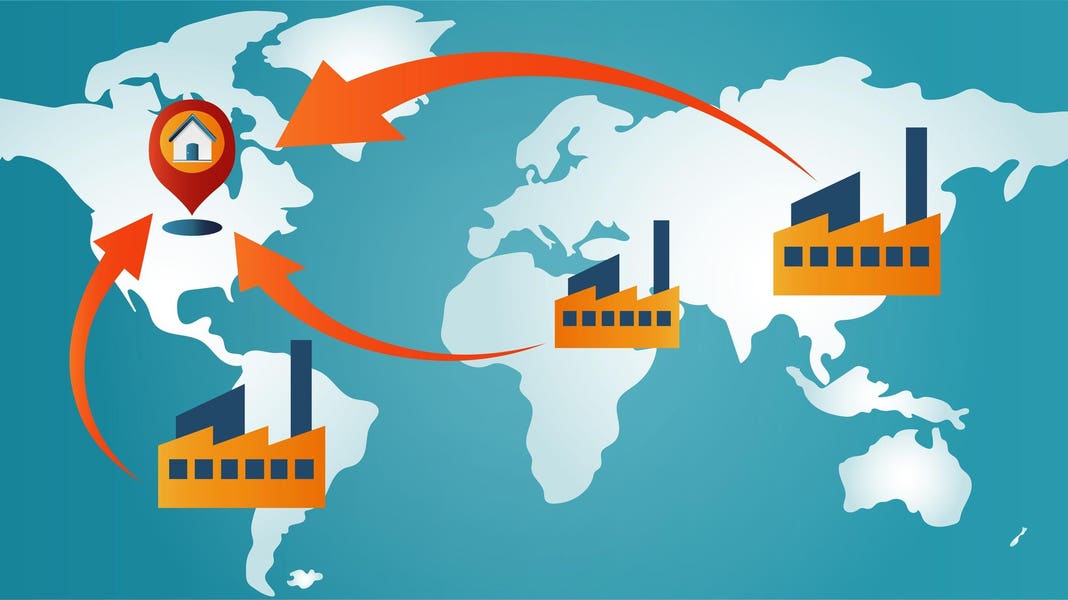
As the global business landscape becomes increasingly interconnected, businesses are continuously exploring strategies to enhance their supply chain efficiency. One such strategy that has been garnering global attention, particularly in recent years after pandemic-related disruptions, is nearshoring.
Nearshoring, the practice of relocating production or services closer to home, not only mitigates the risks associated with long-distance supply chains but also aligns with the growing emphasis on agility and sustainability in global trade practices. This approach, contrasting with traditional offshoring to far-flung locales, offers businesses strategic leverage to optimize operations, improve communication, and significantly reduce lead times.
In this article, we’ll review why so many companies are embracing nearshoring, and the benefits it provides to manufacturers.
Table of Contents
What Is Nearshoring?

Source: cimejal.com.mx
Nearshoring, often considered a subset of outsourcing, involves businesses shifting certain operations or services to nearby countries, typically sharing a similar time zone. The primary objective of nearshoring is to gain the benefits of lower operational costs, coupled with cultural similarities and reduced distance, facilitating easier communication and logistical management.
In the EU context, for example, a manufacturing company in France may nearshore its production or assembly processes to a neighboring country like Poland or Turkey. This strategy allows the company to take advantage of lower labor costs and proximity, enhancing overall supply chain efficiency while maintaining a degree of control, oversight, and swift response times that might be more challenging in a full outsourcing scenario.
Benefits of Nearshoring
There are several benefits companies can achieve from nearshoring, including cost savings, increased supply chain efficiency, reduced risk, improved quality control, and enhanced supplier collaboration.
The primary benefit of nearshoring is cost savings. By shifting certain processes to a nearby location, companies get access to lower labor costs while avoiding the long-term risks associated with full outsourcing strategies. In addition, nearshoring also allows for more efficient logistical operations and shorter lead times as goods don’t have to travel far from their point of origin.
Increased Efficiency
Nearshoring can lead to a significant increase in efficiency for manufacturing businesses. This can be attributed to the shorter supply chains that nearshoring affords, which allow for quicker and more streamlined transportation of goods. The reduced transit times not only speed up production cycles but also lower the risk of inventory becoming obsolete or going to waste. Additionally, operating within similar time zones facilitates real-time collaboration and decision-making, eliminating the delays often encountered when dealing with overseas suppliers.
Reduced Risk

Source: pixel506.com
Risk reduction is another important benefit of nearshoring. With shorter supply chains, businesses are less vulnerable to disruptions caused by geopolitical events, natural disasters, or logistical issues that can occur over longer distances. Furthermore, sourcing from nearby economic areas (particularly in the case of an EU country sourcing from other countries within the EU) can reduce the risk of sudden tariff changes, trade restrictions, or currency volatility.
Improved Quality Control
Given the geographic proximity, nearshoring enables businesses to maintain a closer oversight over their supply chains, leading to better quality control. Regular site visits and inspections can be conducted with greater ease, ensuring that suppliers uphold high manufacturing standards and adhere to the agreed-upon specifications.
Just because suppliers are closer to home doesn’t mean companies don’t need to take proactive measures to ensure safety and quality control. For example, many companies undergo safety testing from a chemical testing laboratory or supplier audits and production inspections.
Enhanced Collaboration

Source: webcreek.com
Nearshoring fosters an environment of enhanced collaboration. Cultural similarities and shared business practices can lead to strong, mutually beneficial relationships between businesses and their suppliers. This often results in better coordination, faster problem-solving, and the development of innovative solutions.
In conclusion, the nearshoring model presents a multitude of benefits for supply chain management. Unsurprisingly, many companies in the EU, US, and other areas around the globe are shifting to nearshoring to take advantage of these benefits. From heightened efficiency and reduced risks to improved quality control and enhanced collaboration, nearshoring serves as a robust strategy for businesses seeking to optimize their operations in today’s complex and dynamic market.







